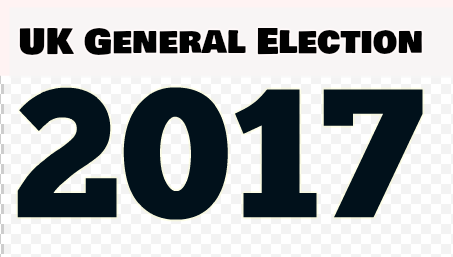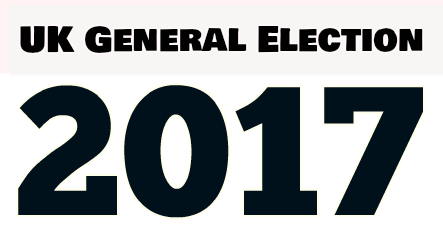

Websites are tools of communication and persuasion. And as such should be used correctly by political parties to achieve their aims. Following best practice web design and SEO it is relatively simple to create a website that Google will love, which increases your chances of ranking higher in the search engine results pages.
Performing an SEO audit on a website is required to establish whether or not a website is following best practice and is optimised in the most effective and efficient way.
It does take a lot of time and effort to do a full audit, but I thought I would show a few examples of what an audit can pick up. As the UK general election is in full swing I thought it would be interesting to look at the two main political parties.
Due to the amount of time a full audit would have taken, we have only been able to do a partial audit and focus on a few important things
Disclaimer: I have no allegiance to any political party, am a swing voter and have approached the analysis of both websites with a completely open mind.
H1 Tag
No H1 tag exists.
Not good, Google values a H1 tag, I would suggest an H1 tag which echoed the title tag. As it would seem that is the most important keyword for the site
Although there are H2 and H3 tags
<h2>Share The Facts</h2>
<h3>Why we need a general election</h3>
Missing a H1 tag is not best practice, and is an opportunity missed to highlight a specific keyword to Google that the page finds important.
<title>The Conservative Party</title>
Functional and showing what is important, but missing an opportunity to add a slogan which will be seen by many. Missing an opportunity for further communication as the title tag is listed in the search engine results pages and does get scanned. A slogan is perfect for that context.
Meta Description
<meta name=”Description” content=”The Conservative Party – Building a country that works for everyone” />
Again, very functional, very conservative. A phrase that is all about getting on with the job with little fuss. I think this works for the Conservative brand.
Canocilization
Although tricky to say, canocilization is a technical issue with the URL structure, it should follow a logical and hierachical structure, allowing Google to easily decide which of your pages you have deemed the most important.
It is crucial you are able to tell Google which is the front page to your website, as that is the one it will want to rank.
You must only have one of the following that will show in your browser, if not Google may index the duplicate URL and it will weaken your ranking potential.
- http://yourdomain.com
- http://www.yourdomain.com
- https://yourdomain.com
- https://www.yourdomain.com
The Conservative website has correct canocilization, is correct, as only https://www.conservatives.com is available.
Duplicate content errors
Pages within the folder, “http://press.conservatives.com/archive/” are throwing up duplicate content errors. Possibly these pages should be non-indexed if not needed to rank or the con. This allows Google to know the exact pages needed to rank. Whilst not a major issue, optimising this will make the site more easier for Google to index the correct pages.
Oh, and something interesting popped up. The meta keywords tag is now redundant and yet the Conservative website has, <meta name=”Keywords” content=”conservatives, conservative, conservative party, tories, tory, david cameron, centre-right” />
Did you spot the error?
H1 tag
Very bad situation with regards to the Labour parties H1 tags.
<h1>Labour</h1>
<h1 style=”margin-bottom: 0.6em;“>We will build a better, fairer Britain.</h1>
<h1>JEREMY CORBYN’S 10 PLEDGES TO TRANSFORM BRITAIN</h1>
<h1>Labour</h1>
You only ever have one H1 tag, whilst you can have many H2 and h3 tags.
It is how Google knows to structure what is important on the page.
A website is a communication and persuasion tool, it should be constructed along best practice guidelines. It’s actually very simple and logical to do this and getting the H1 tag this wrong is inexcusable.
To a web designer or SEO this is quite shocking as the error is not a simple mistake as it is repeated a number of times. Leading me to question the methodology of those who put this website together.
My questions to the Labour party if they were a client would be:
- Who is responsible for the oversight of the website?
- Did the web designer who put this page together raise the bad practice issues?
- What processes are in place to catch such simple mistakes?
I wouldn’t lay the blame at the person who was tasked to do the actual coding, but would investigate the management and systems that allowed this to happen. As whomever is in charge is doing a very bad job.
Title tag
<title>We are Labour – The Labour Party</title>
Not quite sure of the purpose of the duplication. “The Labour party – insert slogan here“, would be better. Seems redundant and a waste of a call to action opportunity.
Meta Description
<meta name=”description” content=”We are a people-powered movement. Be part of it.“>
This tells me that the “movement”, is a movement and not a party, is powered by people. Not sure what else a “movement” would be powered by. “Be part of it”, not sure if this is telling me what to do or asking me. It certainly does not inspire a click through if seen in the search engine results page, which is the purpose of the meta description.
Canocilization
This is a complete mess.
Are both available to the browser.
Yes that is correct, the Labour party website does not yet have a https certificate, which enables data to be encrypted between the browser and the website. It is best practice to have one and Google is saying you should have one and Google uses it as a ranking signal. This is again a basic error which any beginner web designer or SEO would know.
Also, the front page now redirects to http://www.labour.org.uk/index.php/home/splash, which means there are now 3 front pages. It is important you only have one front page to present to Google as it has to chose which one it is going to rank.
The request for contact details would have been better as being above the fold on the original front page and still have the same URL structure. Still filling the screen, but without messing with the structure of the website and its optimisation.
A quick fix would be to redirect the https page to the http page, as well as to redirect http://www.labour.org.uk/index.php/home/ to http://www.labour.org.uk and get rid of the splash page.
But the best solution is to get a https certificate and then redirect all front pages to https://www.labour.org.uk
Other UK political parties are:
More information on what is important best practice:
Search Engine Optimization Starter Guide from Google, this is a great starting guide from the people who you really should be listening to.